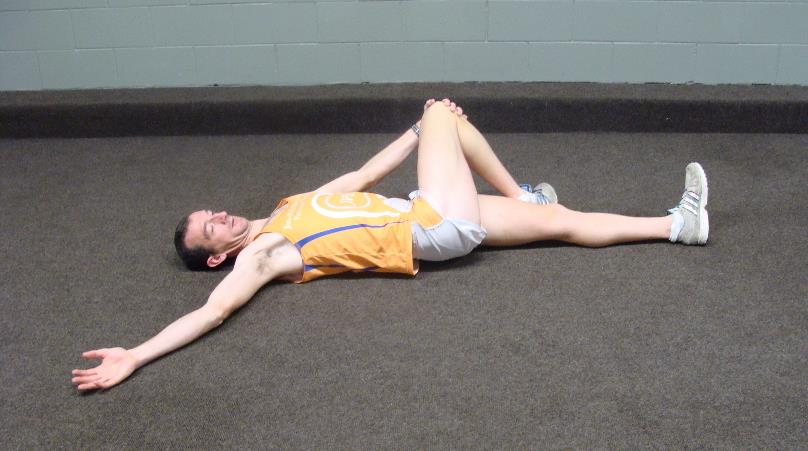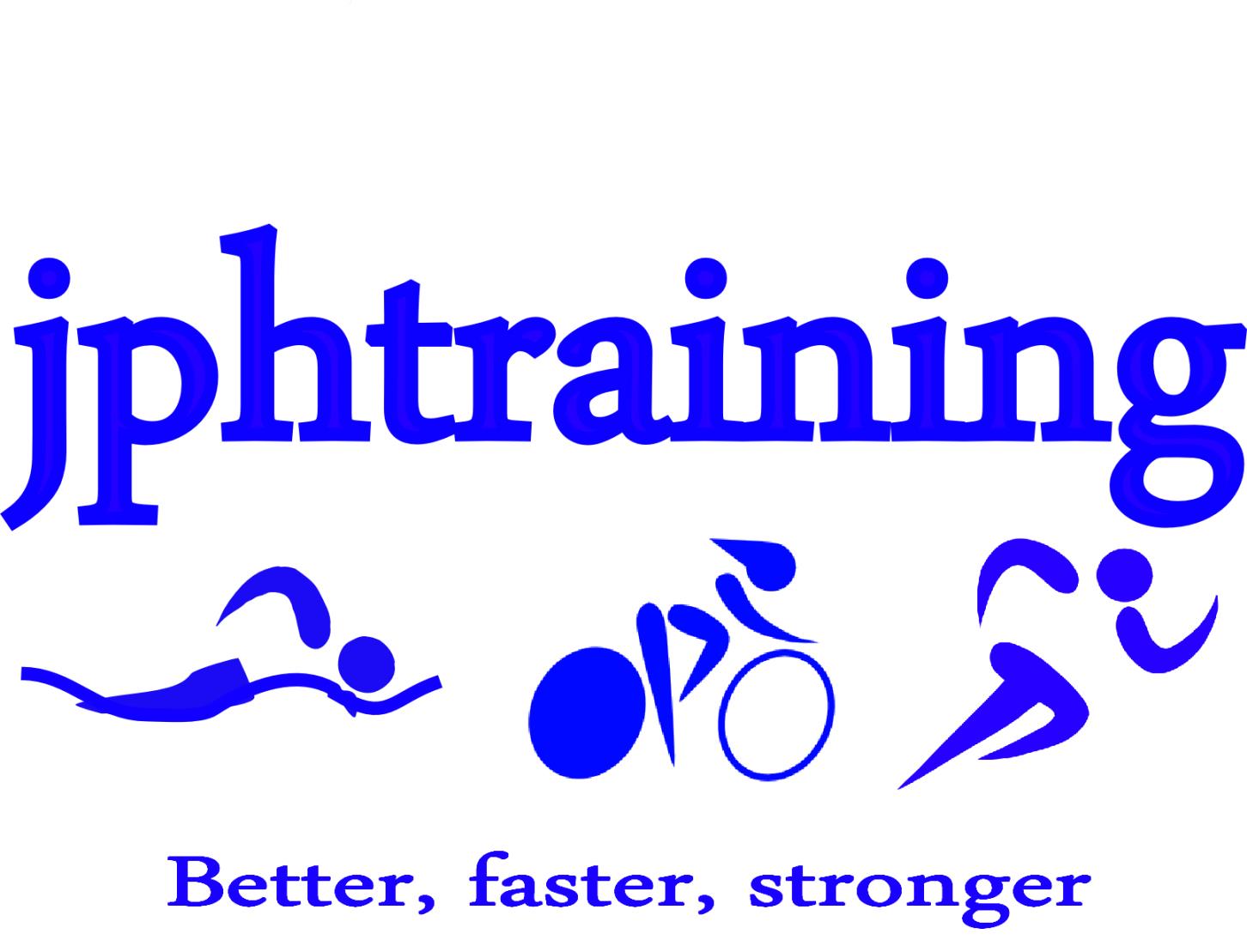Stability work for runners- don't forget the little guys.
Strength, June 06, 2018
So many runners are often getting injured, having tightness or soreness in training, but that can be avoided. If we use a few minutes per week to do some resistance training where we don't focus on doing a load of resistance and training our bigger muscles (which are generally strong enough) by doing exercises like squats, leg extensions, and calf raise, but instead focused on the smaller muscles.
When we run we require all our muscles in the lower body. As we land on the ground almost all the muscles with contract a little to help use stay stable and upright. The more we run the stronger these muscles will become. To a point. If your technique is not great, or you are imbalanced you are likely to not have all the muscles working perfectly.
Here are some exercises that I like doing or prescribing. You can perform them on a cable machine or with a set of resistance bands.
Cable or Theraband Workout
You should aim to complete 3 x 15 repetitions on each side without a break however, it can be that the strength is not there at the start, so concentrate on form and perform as many repetitions, as possible with perfect form. You can also start by performing the exercises as a circuit i.e one exercise after the other.
Knee Drive
The aim of this exercise is to activate and strengthen the hip flexor, as well improving your stability on the opposing side. You can either perform this exercise with a cable or a resistance tube.
You have to start with resistance as your foot is behind your body. The starting point is with your knees together and your knee bent at 90 degrees. While staying upright you swing your knee through and bring it up to around 55 degrees in front of you, slowly bring leg behind you again. Focus on staying upright and stabile.
When you can perform this with a lot of control and stabilty you can make it more advanced by coming up onto your toes when you bring your knee through.


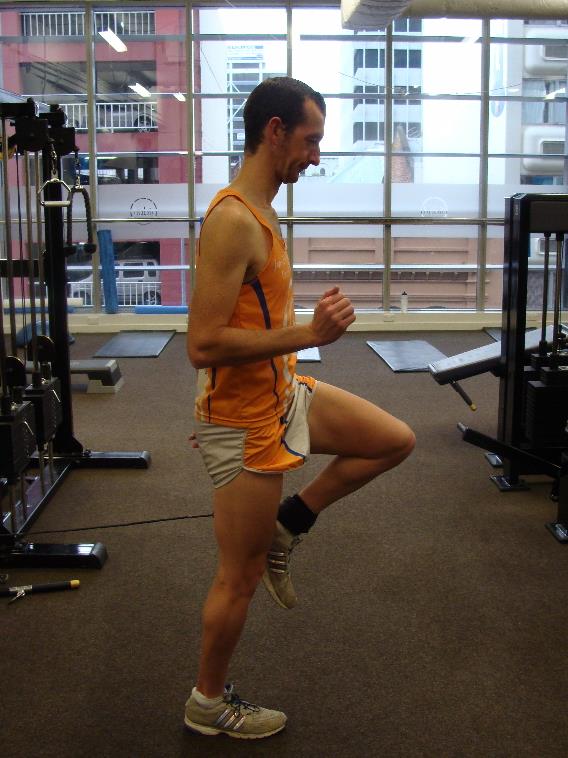
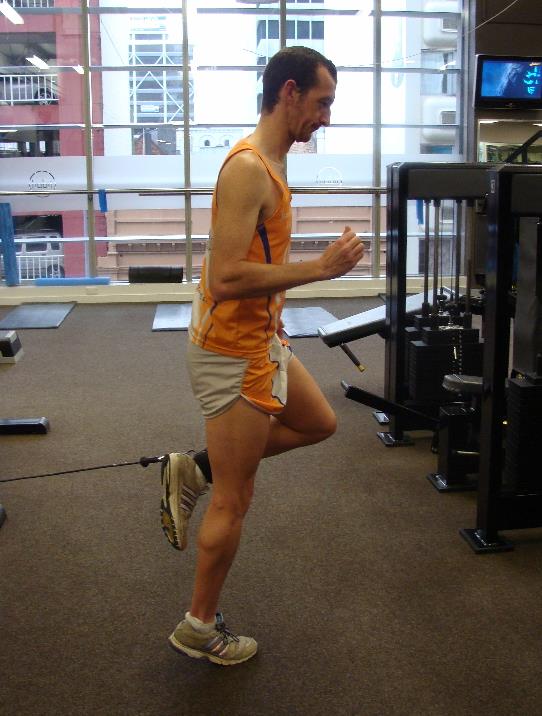
Leg Curl
You need to be very stable while performing this exercise to get the most out of it. Stay upright at all times, you can support yourself against a wall, seat, or stand to help you stay balanced, and your knees stay next to each other throughout the whole movement. Start with your foot just slightly above the ground and slightly behind your body, slowly lift your heel up towards your butt until you have a 90 degree bend in your knee, and then lower the foot back down even slower.
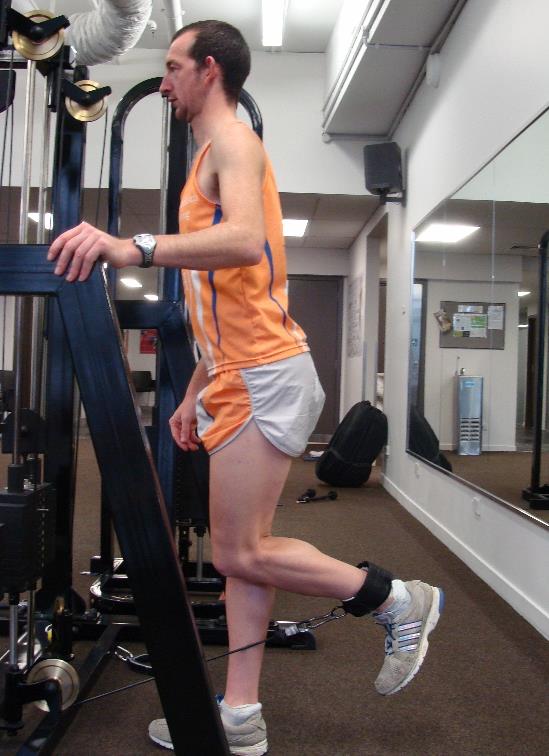
Toe Tappers
The aim here is to improve the strength in your lower leg. It will also provide a stretch in this area. Start with resistance on when your toe is extended away from you, slowly pull your toes back towards your knee, and then even slower control the weight back down.
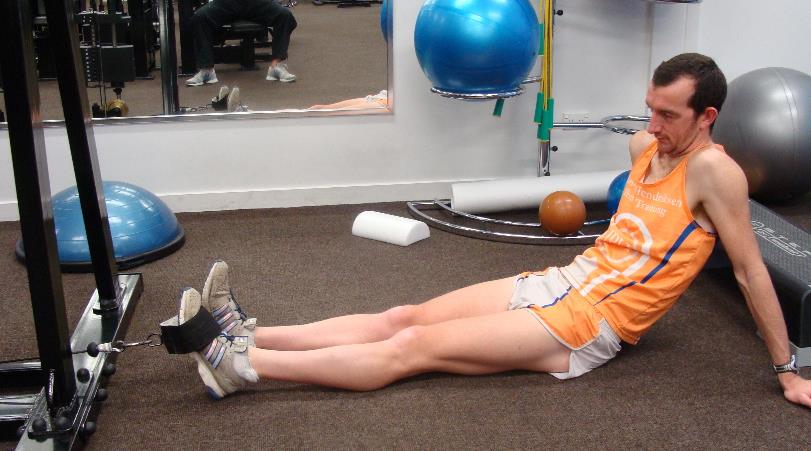
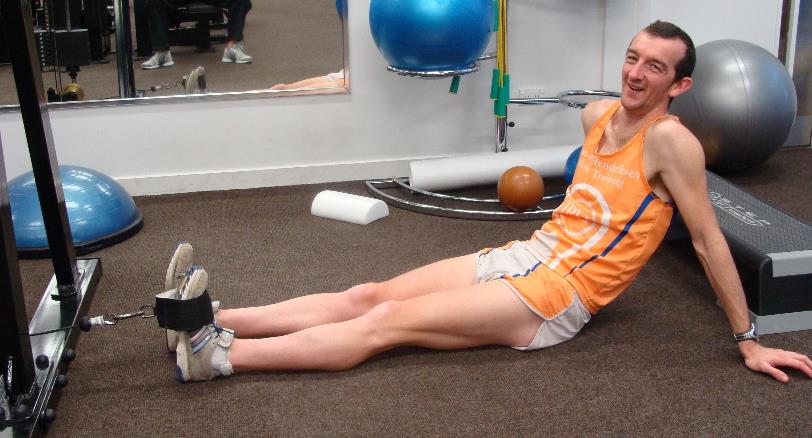
Adduction and abduction
This exercise is similar to a warm-up drill that we do apart from now we have a bit more resistance. You start with your leg extended slightly behind you, your foot should be slightly outside your hips, bring the leg and foot forwards until it is slightly in front of your body and crossed over your midline, and control the movement backwards with less speed.
You can start by holidng onto something and then when it gets easier your can try it without support. Stay upright and focus on staying strong and stable on the opposite side. Do not let your hips tip.
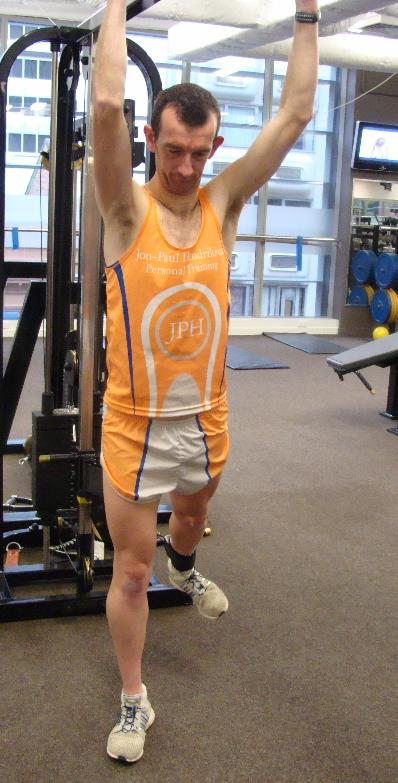


Single Leg Bridge
Start with both feet on the ground, your knees about 5cm apart and bent, and your upper body flat on the ground. Drive your hips up off the ground evenly pushing through both sides (I concentrate on pushing through my heels), bring your hips up until you have a straight line from your knees to your shoulder (you do not want a dip in your core area), hold it briefly before, extend one leg in front of you, keep your knees in line with each other, lower your hips slowly down towards the ground, and then push your hips back up. Ensure that your hips stay level and that you do not dip or twist when performing this movement.

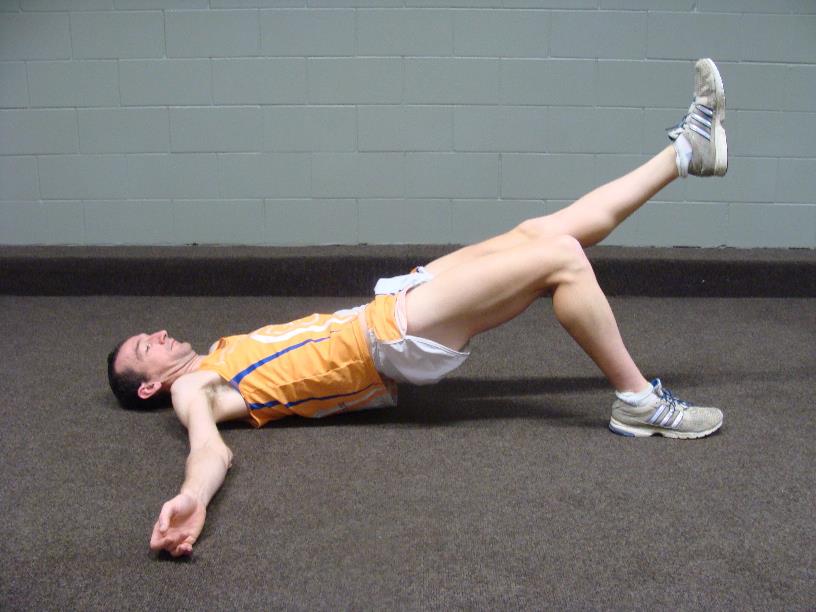
Stretching
I am not a huge fan of stretching, but if you are having issues with your gluteals, hips, adductors, or abductors it does make sense to ensure that you are flexible in every movement direction of the hips. Often the gluteal muscles are forgotten. Here are two good stretching positions for them. I like trying to keep the movement fairly dynamic, so I will hold the stretch where I feel it only slightly (ever don't force a stretch), then relax and move in the opposite direction by openly your legs up and doing into abduction, and then return to the stretch.

